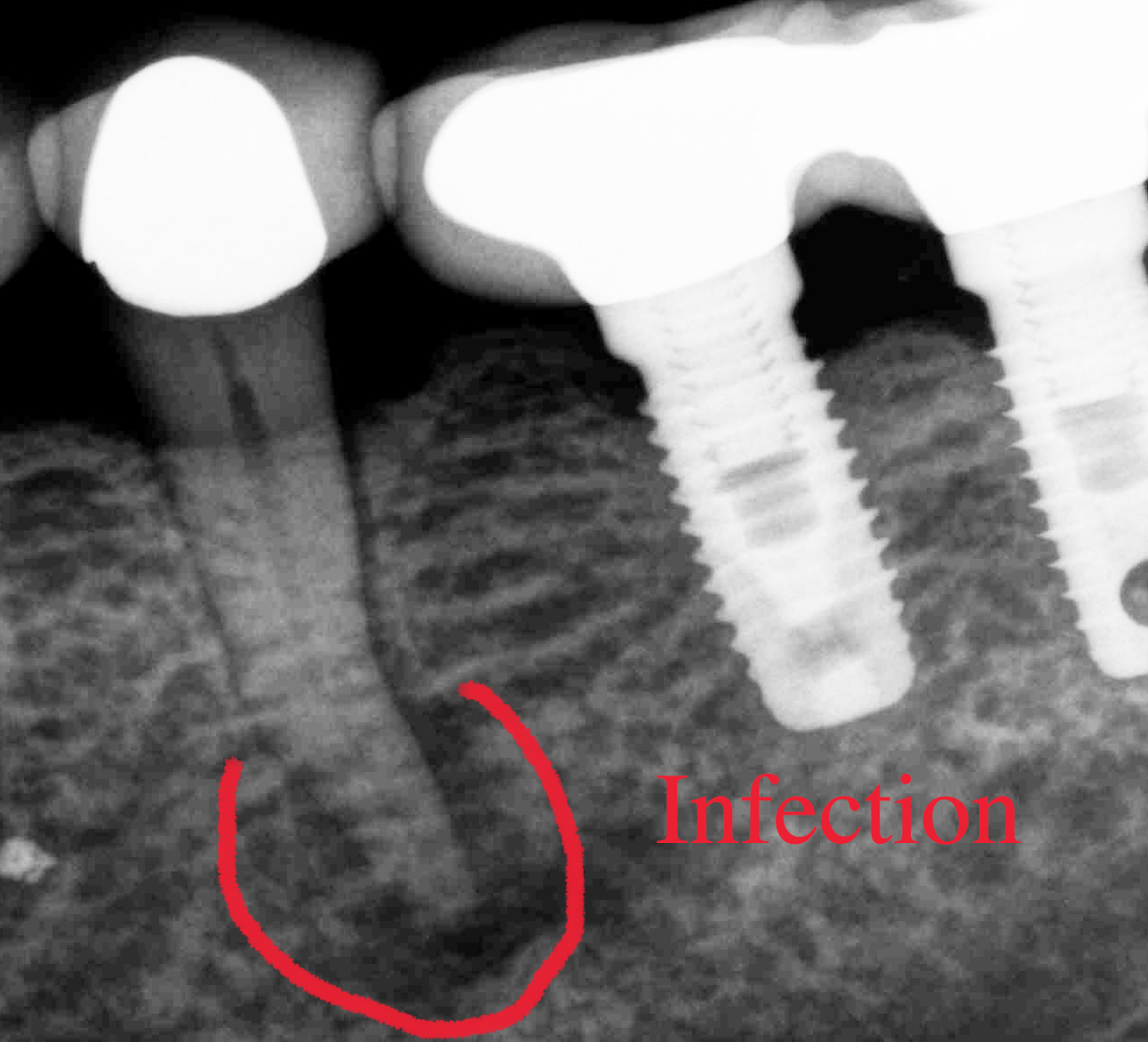When the nerve inside the tooth dies, it becomes a liquid and will drain out at the end of the root. In some cases the patient may not feel any pain or discomfort. However, the low grade infection will stay localized to the bone surrounding the tooth and will gradually grow over time. When enough exudates from the infection manage to dissolve an area of the jaw bone, a tract is created for the liquid to drain into the soft tissues beyond the bone. That is when the face can swell up. Periodic radiographic evaluation for decay as well as the integrity of the bone and gum surrounding each tooth is crucial in preventing this type of problem. Indeed, a diagnosis for the need of a root canal maybe presented by a dentist even when the patient does not have any pain associated with a particular tooth.
This Xray was from a patient who came in yesterday with facial swelling. Apparently the nerve inside the bicuspid next to the implants had died at some point, and the infection had spread beyond her jaw bone.

